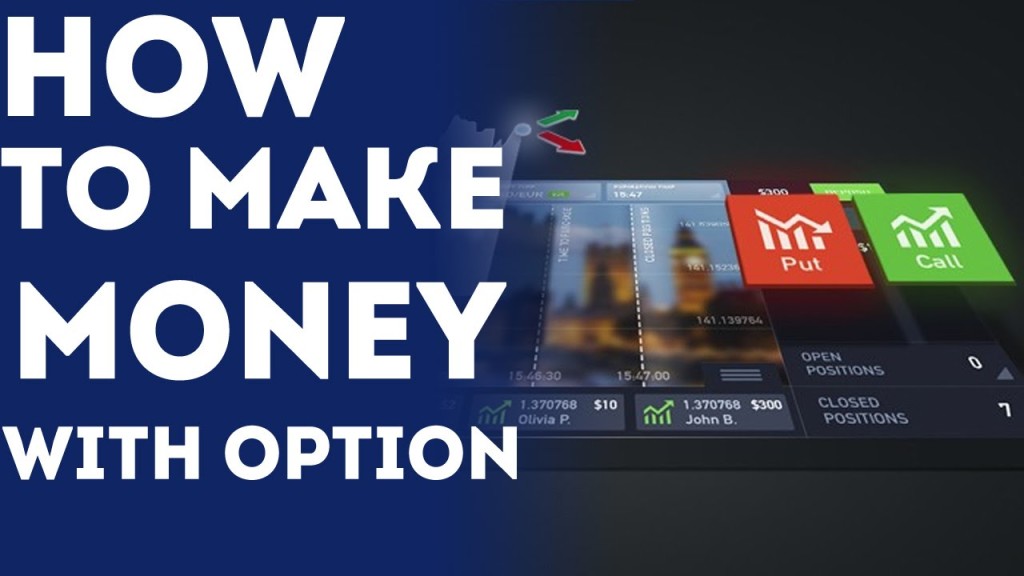A Beginner’s Crash Course In Options Trading On Stocks
- February 4, 2016
-
W. Crowder
- Hot Stock Tips, Stock Trading Teacher
- option trading, options
- 1 Comment

Options are an exciting, sometimes fast paced, and occasionally quick way to make money in the stock markets. They are also some of the most misunderstood methods and means of trading known to man. With an option contract, an investor can double or even triple his or her money in a matter of days, lose 50% to 100% of it in the course of the options contract, and be massively up and then majorly down all within the span of a few trading days. It is important to realize that fully ninety percent of all options in the stock markets expire worthless. This is why it is so important to approach this great gold mine of an opportunity in trading with caution, respect, and a solid platform of understanding before traders set their sails for option land investing.
Let’s be completely honest here. Most options trading guides do not work on the assumption or basis that the readers come to the table with a lack of understanding of the basics of these powerful and potentially enriching trading instruments. There are a number of important definitions that must be properly understood before a trader is ready to investigate the various interesting and potent options trading strategies in the world. In this explanation, we promise to try to keep the definitions to the more basic ones in keeping with the idea of this being a true Beginner’s Crash Course.
While it would be easy to go on to the more complex strategies in the latter part of the post, this would only confuse the issue when the basics have only just been covered and not yet mastered and successfully traded. In the next week’s post, we will cover the basic options trading strategies utilized in the markets today. Beyond this, there are plenty of other guides on the market that cover these more difficult to grasp strategies and concepts, which are only for truly advanced options masters to dare to tread. There is nothing worse than entering a complex options strategy that the trader can not begin to nor realistically ever hope to understand. This is sadly akin to going to a casino and putting all of one’s chips on the color of red or black and then “letting them ride” until they are either quickly or finally lost.
Calls and Puts Explained In Layman’s Terms

In their simplest to understand form, options are contracts that allow an investor to buy or sell stock shares of an underlying stock issue at a fixed strike price. The price that the investor pays for this privilege and option instrument is called the premium, while the strike price is the point at which the buyers or sellers can buy or sell the actual shares of stock if they so desire. The premium price of an option is actually comprised of the intrinsic value plus the time value. We will go into those two components in detail a little later.
Calls are contracts that give the owner the right, but not the required obligation, to buy the underlying shares of stock associated with the contract at a certain strike price. Puts are the opposite contracts which provide owners with the right, but never the obligation, to sell the underlying share of the stock issue at a fixed strike price. These contracts can be bought and owned, or sold to others. A person who owned the shares of stock would be more likely to buy a protective put to guarantee the lowest price at which they could sell their stock, while an investor who was short sold the shares of stock would be more likely to buy a protective call contract to lock in the highest possible price that the stock they are sold short on could move against them in the market. Investors who own shares of stock can also sell covered calls against their shares position, while investors who are short shares of stock might sell covered puts against their negative shares position. We will get into more of these basic options strategies in the next post.
Intrinsic Value of an Option
Intrinsic value is not as difficult a concept to understand as it may at first sound. It is simply the price of the underlying stock above the strike price of the option if it is a call, or the price of the underlying stock below the strike price of the option if it is a put. Examples of this are as follows:
• Call Option Intrinsic Value
DPS (Dr. Pepper/Snapple Group) stock trades at $95 per share. If an investor owned a $90 Call contract on DPS, then the call option’s intrinsic value would be $5, since the $95 stock price – $90 strike price of the option leaves $5 of intrinsic value.
• Put Option Intrinsic Value
In the same example with Dr. Pepper/Snapple Group, if an investor held a $110 Put contract on DPS, then the put option’s intrinsic value would be $15, since the $110 strike price – $95 stock price leaves $5 of intrinsic value.
Time Value of an Option
Time value is the other component of the premium value on a given option call or put contract. This is a more vague concept, though it is actually fairly simple to understand, if not to actually calculate up (fortunately no one has to calculate up time values anymore as computer programs, trading platforms, and algorithms all do this nowadays). In the above examples, we know that the intrinsic value of the call option is $5, while the intrinsic value of the put option is $15.
To figure out the time value of either contract, simply take the actual premium value of the option and subtract out the intrinsic value, as all that is left after intrinsic value is removed is any remaining time value. So if the DPS call contract above had $8 in premium value, then the time value would simply be the $8 premium – the $5 intrinsic value, leaving $3 time value. Similarly, if the Put contract possessed a $20 premium value, then the time value would be the $20 premium value take away the $15 intrinsic value, leaving a $5 time value.
In the Money, At the Money, and Out of the Money Options
Most of the option contracts in the market are actually out of the money, or possessing no intrinsic value. Options that are Out of the Money have only time value. If our DPS Call Contract in the first example above had a strike of $100, then it would be out of the money by $5. It’s premium of $3 would represent only a time value, as it has no intrinsic value at this point.
In the money options are contracts that are like the ones in our two examples above. The $90 Call contract is $5 in the money, while the $110 Put contract is also in the money by $15. At the money options are intuitive. In the example with our DPS $95 stock above, a $95 call or put contract option would be exactly at the money, since its strike price equals the actual price of the underlying DPS shares themselves.
Expiration Dates of Options
What makes options both so fast-paced and sometimes nerve-wracking is the fact that these instruments and contracts are not unlimited in time duration. They are in fact quite the opposite, with definite and pre-defined time limits attached to each call or put contract. Where stocks are concerned, options come with a certain month expiration date, or date on which and month in which the contract will expire. Once again using our easy to understand DPS options contracts from above, both the call and the put contract might have March expiration dates. This would mean that come the third Friday (usually) of March, the contract would simply cease to be.
Any options that were at the money or out of the money would expire worthless, while any in the money options would be paid out in cash at this point. In practice, most options holders who are using these options contracts as speculative investments would seldom allow them to expire worthless, which would represent a 100% loss of investment in them. A sounder strategy on both an out of the money or even at the money option would be to cash out while it still has some time value remaining. An in the money option could either be sold while it still had a time value component remaining, or it could be simply allowed to expire so that the intrinsic value of the contract could be paid.
In Conclusion
This gives a good basic understanding of the key terms and concepts associated with both call and put options contracts. In the next week’s post, we will continue the discussion by exploring the most basic (and in many people’s minds most useful) and common strategies for trading these call and put stock options contracts. Stay tuned for more exciting options instruction then!
